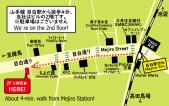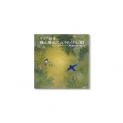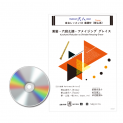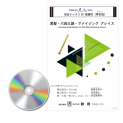Category
- Pre-Owned Bamboo Flutes
- Shinobue Flute
- Shakuhachi Flute
- New Shakuhachi For Sale (1.1-1.7)
- NEW SHAKUHACHI FOR SALE (1.8)
- New Shakuhachi for Sale (1.9 and longer)
- New Jinashi Shakuhachi for Sale
- Shakuhachi Repair
- Shakuhachi Accessories
- Utaguchi Caps for Shakuhachi
- Shakuhachi Cases
- Shakuhachi Bags
- Shakuhachi Bestsellers
- Shakuhachi Books/Scores
- Shakuhachi CD/DVD/Recordings
- Shakuhachi For Beginners
- Japanese Gift Items
- Komuso Items
- Tips from Top Players
- Shakuhachi FAQ
- Coming Soon...
- Coming Soon...
- Flute Making Tools
- Lesson/Workshop Booking
- Gagaku Flute
- Garments/Festival Items
- Japanese Urushi
- Nohkan - Japanese Bamboo Flute
- Outlet Bargain
Business calendar
WHAT'S NEW
-
1.8 Kinko-Tozan Takusan Japanese Shakuhachi Bamboo Flute
-
1.8 Tozan Seika Japanese Shakuhachi Bamboo Flute, PRE-OWNED
-
1.8 Kinko-Tozan Takusan Japanese Shakuhachi Bamboo Flute
Home >> Shakuhachi Flute >> Shakuhachi CD/DVD/Recordings
Shakuhachi CD/DVD/Recordings
Pages
- « first
- ‹ previous
- 1
- 2
- 3
CD Onku The World of Katsuya Yokoyama
Product #: C0225
Price: ¥2,750 /
1.Onku 2.Makiri 3.Ririura 4.Futatsu no Uta 5.San'an 6.Shika no Tone (Originally released in 1980)
CD Shakuhachi Recital 81 by Katsuya Yokoyama
Product #: C0196
Price: ¥2,750 /
Kon Kai, Daha, Takiochi, Wadatsumi no Irokonomiya, Kangen Hisho, Duo Concertante for Shakuhachi & Koto(Recorded at Carnegie Hall in '85)
CD Haru no Umi by Hozan Yamamoto
Product #: C0234
Price: ¥1,676 /
1.Haru no Umi(Duet) 2.Haru no Umi (Karaoke for shakuhachi with. Shakuhachi played with small volume) 3.Haru no Umi (Karaoke for shakuhachi) 4.Haru no Umi (Karaoke for koto. Koto played with small volume) 5.Haru no Umi (Karaoke for koto) Western score incl.
CD Shakuhachi Lesson (Tozan)
Product #: C0221-T
Price: ¥2,970 ¥4,055 /
Practice CD set including famous pieces Kurokami, Rokudan no Shirabe and Amazing Grace. CD contains karaoke version and instructor's performances. For Kurokami and Rokudan, both Kinko and Tozan versions are recorded. This set comes with Tozan&Western scores.
CD titles:
1.Kurokami-Kinko
2.Kurokami-Tozan
CD Shakuhachi Lesson (Kinko)
Product #: C0221-K
Price: ¥2,970 ¥4,055 /
Practice CD set including famous pieces Kurokami, Rokudan no Shirabe and Amazing Grace. CD contains karaoke version and instructor's performances. For Kurokami and Rokudan, both Kinko and Tozan versions are recorded. This set comes with Kinko & western scores.
CD titles:
1.Kurokami-Kinko
2.Kurokami-Tozan
3.Kurokami-Karaoke
4.Rokudan no Shirabe-Kinko
5.Rokudan no Shirabe -Tozan
6.Rokudan no Shirabe -Karaoke
7.Amazing Grace-Ensemble
8.Amazing Grace-Karaoke
Pages
- « first
- ‹ previous
- 1
- 2
- 3
© 2025 Mejiro Co., Ltd. All Rights Reserved





















